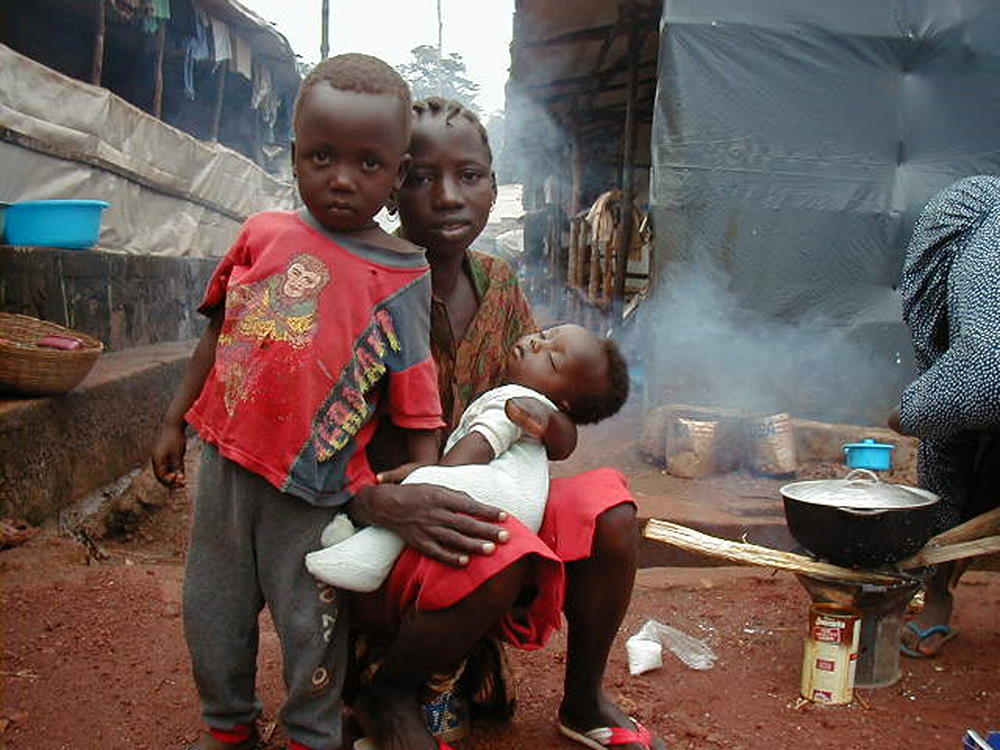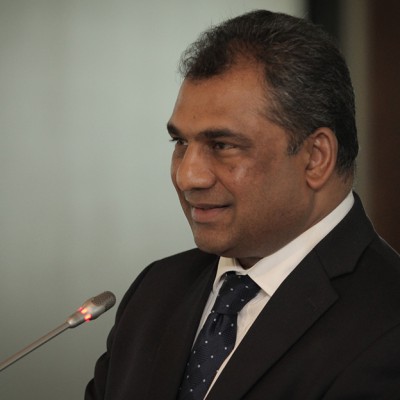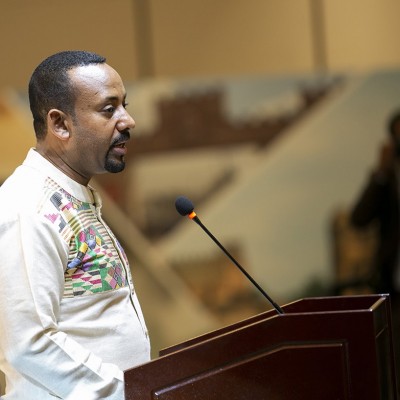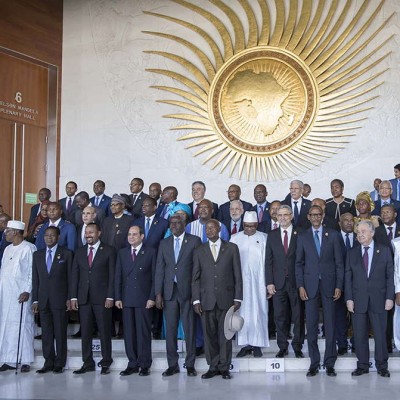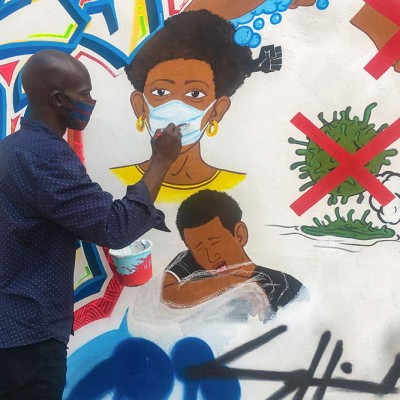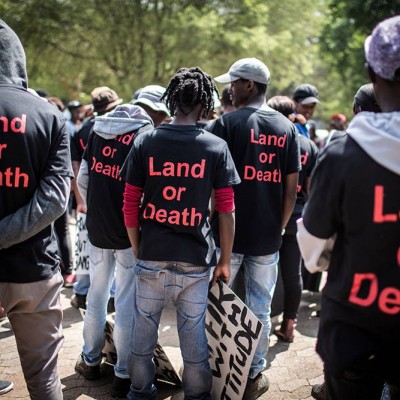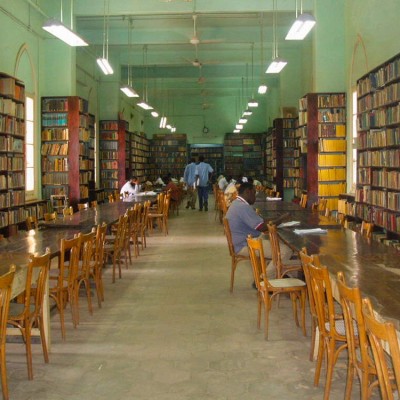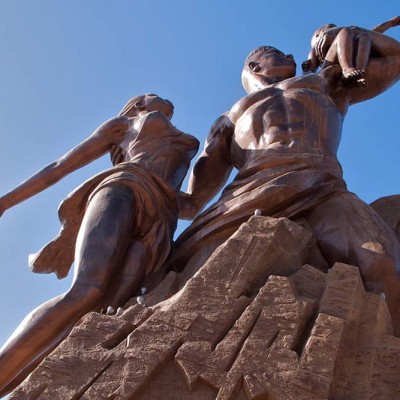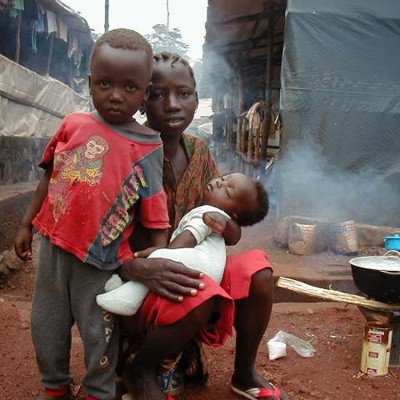Introduction
Sierra Leone went through a vicious civil conflict between 1991 and 2002, which led to the brutal killings of thousands of innocent Sierra Leoneans. The conflict was characterised by some of the most heinous crimes against humanity recorded in Africa. The signing of the Lomé Peace Accord in 1999 finally reignited hope in the lives of Sierra Leoneans who bore the brunt of war. This article focuses on the political landscape of hate messages and ethnic/tribal instigation by politicians and their supporters between 2007 and 2020. The central argument is that the trend of ethnic instigations and hate messages has the potential to undermine state stability and likely lead to genocidal war if it is not managed properly. To set the context, some brief conceptual debate on tribe and ethnicity in the context of Africa and other developing regions is expedient at the outset.

Ethnicity versus Tribe
“Tribe” and “ethnicity” are among the most-discussed concepts both in sociocultural anthropology and political history. Various definitions exist to explain the two concepts. Sanders defines ethnicity “as a social group or category of the population set apart and bound together by common ties of race, language, nationality or culture”.1 Barth argues that ethnicity is the outcome of the establishment of social boundaries as a boundary marker that separates one group of people from another.2 Generally speaking, ethnicity is related to a population subgroup with a common national or cultural tradition.
Tribalism, on the other hand, according to Nothwehr, is the “attitude and practice of harbouring such a strong feeling of loyalty or bonds to one’s tribe that one excludes or even demonizes those ‘others’ who do not belong to that group”.3 Nwaigbo argues that tribalism prompts someone or a group of people to have a positive attitude towards those who are connected to them through kinship, family and clan, which directly or indirectly alienates them from people of other tribes who are not related to them by either kinship, family or clan.4 Tribalism is generally linked by economic, social or blood ties, usually with a common dialect and culture.

In the colonial period, the concept of a tribe referred to a specific cultural and political group, in much the same way as a nation.5 In contrast, an ethnic group refers to a larger culturally distinct group, which is equivalent to a nation or nation-state. It is argued that the equivalence of social groups described by Westerners as tribes in Africa are not called tribes in the West. They are more respectfully called nations, nationalities or ethnic groups. Likewise, the conflicts described as tribal conflicts in Africa are not given the same description if they occur in the West. So, the concepts of tribe and tribal conflicts, critics argue, are pejorative concepts with connotations of primitivity. Ethnicity and ethnic conflicts are, as such, seen as superior concepts by most African critics. However, for the purposes of the analysis of the situation in Sierra Leone, both terms are used interchangeably for a clearer understanding of the Sierra Leonean context.
Political Tolerance since Independence
Sierra Leone achieved its independence in 1961, with Milton Margai of the Sierra Leone People’s Party (SLPP) as its first prime minister. At independence, the population was barely two million people and the country had all the hallmarks of a democratic state, with almost all democratic governance structures in place. There were few political cleavages along tribal or ethnic lines.6 However, although the new independent SLPP government was comprised of northern politicians and claimed to have a national character – as espoused in its motto: “One country one people” – it was not free from accusations of ethnic politics, since it drew its support largely from the south/east, which is predominantly Mende speaking. But it is important to point out that the SLPP was founded in the north and that most of its founders were northern Temnes.
Tribal or ethnoregional politics came into the public domain after the death of Margai. The All People’s Congress (APC) recruited people in the provinces that were formerly the seats of the SLPP. Siaka Stevens, leader of the APC, claimed that he was born of a Limba father and a Mende mother from Moyamba, the headquarter town of the Kayamba chiefdom in the south. This temporarily diffused any tribal tensions, since he appeared to be the son from the two divides – north and south/east. He focused his campaign and recruitment in the north of the country, where he recruited elite and educated people to join him by making false promises and effecting the character assassination of the then prime minister, Albert Margai.

The Conflict
Generally speaking, eight major factors were responsible for the outbreak of the conflict in Sierra Leone between 1991 and 2002. These were the overcentralisation of state institutions; rural exclusion, factionalism and ethnic politics; the politics of systematic exclusion; chiefdom-level politics; corruption and abuse of power; misuse and neglect of youth; lapses in the state security apparatus; and the politicisation of the judiciary.7 The combination of all these factors, and likely others, have been identified as the root causes of the Sierra Leone conflict.
Although ethnic identity was a feature of the domestic politics of post-independent Sierra Leone, it did not appear to be a significant feature or factor in the 11-year civil conflict in the country. More importantly, the interconnectedness between, and among, the various ethnic groups had always rendered deep tribal consciousness and tension irrelevant. From this premise, it stands to reason that the issue of tribalism is fanned by selfishly motivated politicians. Some politicians and their political parties in Sierra Leone use ethnoregional messages to either gain political power or to remain in power. Clearly, when political parties do not have convincing and practical solutions and messages for the electorate, they often use the “softer” option, which is ethnic or tribal manipulation. Unlike other civilised democracies where policies and programmes get people elected into political and public offices, in Sierra Leone, tribalism is the safe haven where unscrupulous politicians seek refuge during electioneering processes.
On the positive side, the people of Sierra Leone have always lived amicably together during “normal” times. There are intermarriages between and among the tribes and all the tribes are spread across the country. However, the current mounting tension and tribal hate messages being spread through social media and other media outlets are serious causes for concern. These are deliberate machinations by politicians to use the tribal narrative to further divide the country for political gains and political point-scoring.
From the experiences of Rwanda, where hate messages led to widespread genocidal violence that resulted in the deaths of thousands of people, might the current state of affairs in Sierra Leone, if not quickly addressed and dealt with, not lead to tribal conflict? A brief retrospective account of the ugly incidences that led to the genocide in Rwanda can serve as a quick reminder to all Sierra Leoneans in both political divides (SLPP and APC) that hate messages will not only further divide an already polarised country, but can lead to serious consequences.
Much is already known about the genocide in Rwanda and how it started through the use of radio and the hate messages broadcasted. A semi-private media outfit, known as Radio-Télévision Libre Milles Collines (RTLM), which was launched in 1993, perpetrated violence through the messages that it broadcast. This media outlet was owned by hardliners who belonged to the ruling regime, and who were ready to exterminate the wider Tutsi population in Rwanda. The messages spread on radio and television created a situation that advanced extreme Hutu messages, which were deliberately calculated to spread rumours of a Tutsi genocide against the Hutu population. By 1994, the radio station started identifying areas of Tutsi targets that could be attacked, hence paving the way for the genocide. The mere derogatory description of Tutsis as cockroaches reduced the humanity of the Tutsis in the eyes of illiterate Hutu population and spurred them on to a rampage to kill Tutsis.
Tying this with the current spate of hate messages perpetrated on social media in Sierra Leone, and bearing in mind the level of illiteracy in the country, there is growing concern about the security and stability of the state. These hate messages are not only undermining peace, but are also serving as stimulants for the disintegration and breaking of relationships in an already badly divided and polarised society, based on ethnoregionalism. Since the democratically elected government of President Julius Bio, the situation has become even more fluid and dangerous, as some elements of the opposition are accused of financing, supporting and sometimes even participating in the destabilisation efforts of the new regime.
In his national broadcast on 8 May 2020, Bio emphatically stated:
Evidence emerging from investigations have named known local leaders and members of the APC as being responsible for inciting, planning, financing, mobilising, and in some cases actively participating in violent terrorist attacks against the people of this country.8
The president further stated:
The actions of these persons are not peaceful political expressions as one expects in a democracy. Their actions are carefully planned, coordinated, well-orchestrated and executed acts of violent terrorism targeting the state, state officials, public buildings, and private persons and property. Like terrorists elsewhere, they even record their acts with telephone cameras, run self-valorising commentaries on their acts of extreme violence and killings, and share those synchronously in WhatsApp forums.9
Having set the scene and context, this article will now examine the genesis of mono-ethnic politics in Sierra Leone in the post-colonial period, which clearly manifested itself in a Limba (one of the northern tribes) hegemony. This was dubbed “Ekutay” under the former president, Joseph Saidu Momoh.

Ekutay and the Politics of “Tribe.”
Ekutay is a Limba word that means “come and see” or “have you seen?”, coined during the Momoh presidency. This term was injected with a heavy dose of ethnic and tribal connotation. Ekutay was an ethnic interest group that was formed to consolidate power in the hands of the Limba from a specific part of the north. In other words, it was an ethnic-based outfit to create a powerful Limba oligarchy to stay in power for a long period of time, thereby excluding other ethnic groups. The Ekutay caused envy among other tribes, such as the Temnes, who felt betrayed since their expected choice (Sorie Ibrahim Koroma) was nowhere near the elite of the Ekutay. Other tribes in the north were less represented in powerful positions. Ekutay was purely a status club to showcase power in the hands of the Limbas, and away from the Temnes and other ethnic groups. It was also through the Ekutay that major political decisions were made, and it was this same organisation that appointed people to senior political positions in the country at the time.
In addition, under the Ekutay, power was further centralised in the hands of one person – the president. Richard Fanthorpe argues that during the APC period, the small northern town of Binkolo became a major recruiting centre for the Republic of Sierra Leone Military Force (RSLMF). Stevens’ successor, Momoh, began his career as one of its recruits. As APC power began to unravel in the late 1980s, Momoh used the Limba cultural association (Ekutay) as a platform to preach the virtues of ethnic nationalism. As is the case in many countries in Africa, ethnic mobilisation begins in the military, which is arguably a colonial by-product. However, the Sierra Leone situation based on Ekutay politics became systemic.
Although the Ekutay was largely a Limba ethnic hegemony, it opened up to select heavyweight politicians from other tribes, who were somewhat indispensable because of their political standing in their political constituencies. Nathaniel King posits:
The Ekutay organisation presents a noteworthy peculiarity. It became an ethnicity-based body that, after crystallising the centralisation of political power, opened itself up to other ethnic group members, especially heavyweight politicians coming over from the then proscribed Sierra Leone People’s Party (SLPP). The most outstanding of these nominal tribal cross-overs was when a currently highly-placed eastern Mende SLPP and government official, J.B. Dauda, claimed Ekutay citizenship in the late 1980s.10
Joseph Bandabla Dauda, a Mende politician from Kenema, joined Ekutay to demonstrate total submission to the APC. But, more importantly, the politician was aware that to have a share in the national political landscape, he had to join the organisation. This is how he became the only senior Mende politician to find himself in what was generally meant to be a Limba political club.
Tribalism and Regionalism in Sierra Leone’s Electoral Process
In Sierra Leone’s political system, there is largely blind ethnic/regional voting by the electorate. The electorate is misled by politicians to buy into their divisive messages, based on tribe and region, as this is their only way to win votes. This has divided the country significantly and is pushing the country down a path of tribal conflict. For example, it was not uncommon to hear politicians directly appealing to regional and tribal sentiments during the campaign period for the 2018 elections. A classic case in point was a paramount chief from the Buya Romende chiefdom in the Port Loko district, who is on record instructing his people to chase any member of the then opposition SLPP (Mende) party supporters out of the chiefdom. The overall messaging during those elections largely resonated around region and tribe.
The 2018 general and presidential elections essentially serve as a testimony that Sierra Leone politics is sharply divided along tribal and regional lines. This has been the voting pattern for decades in Sierra Leone, but it became a more serious security issue during and after the 2018 general and presidential elections. For example, taking a look at the voting pattern of two districts from the eastern part of Sierra Leone, which is predominantly Mende speaking, and two districts in the northern province of Sierra Leone, which is largely comprised of the Temne tribe, it was quite clear that the voting pattern was based on tribe and regional consciousness. In the Kenema district, the SLPP, which largely draws its support from the Mendes, had 88.9% of the votes cast compared to the APC, which is largely supported by the Temne and received only 11.5% of the votes. On the other hand, the APC, which is largely Temne, received 90.68% of the total votes cast in the Bombali district, according to the final results published by the National Elections Commission.11
Beyond elections, however, Sierra Leoneans generally co-exist peacefully. Intertribal marriages are common and people relate well, irrespective of background or ethnicity. The problem of tribalism usually arises during the election process, when politicians use it to gain political power or to remain in power. Politicians are not usually bothered about the wider implications of their ethnoregional and tribal messages sent out during elections. The reason why tribalism was a trending topic during the 2018 election period is because of the use or misuse of social media, which created a platform for all to air their views and through which politicians used surrogates to spread hate messages and vulgarities. Some of the messages sent out on social media were not limited to incitement but also included tribal and regional hate, as exemplified by the paramount chief of Buya Romende against the Mendes and supporters of the SLPP.
Hate messages and fake news are destroying Sierra Leone as a nation. The type of messages being sent out, especially on social media and, to a lesser extent, mainstream media, is clearly undermining state security and national cohesion in Sierra Leone. For example, more than ever before, politics of the tribe has taken centre stage in the politics of the country. If not quickly checked, this can lead to catastrophic consequences.
Tribal hate is gathering so much momentum, especially after the 2018 general and presidential elections, that if the heightening tribal tensions are not extinguished, the human catastrophe that looms cannot be prevented. Messages are sent out on social media instigating hate and a call for war in the country, especially from some alleged members and supporters of the main opposition party, the APC. A classic case in point is a Sierra Leonean who resides abroad but sends abusive and incendiary messages to youth in the country, instigating them to burn down government institutions and other private properties of people who are deemed to be part of the SLPP. Examples include the burning down of the private domicile of the paramount chief in Lunsar, who was considered to be a supporter of the ruling SLPP; the burning down of hospitals, as in the town of Tombo; and the setting of fires, as in the case of the maximum security prison in Freetown.
Conclusion
This article has critically examined the current trends in the political landscape of Sierra Leone from the point of view of ethnoregional politics and hate messages, and the wider implications of these on peace and stability in the country. The core argument is that the current political tensions emanating from ethnic and tribal hate messages have devastating consequences on a country which has gone through 11 years of civil conflict, characterised by heinous crimes against humanity. There is no mistaking that if these divisive hate messages – which are being spread on social media and, to some extent, mainstream media – are not properly managed, Sierra Leone may likely be heading towards serious tribal or ethnic conflict.
As observed by the former United States president, Barack Obama, “politics that is based solely on tribe and ethnicity is a politics that is doomed to tear a country apart. It’s a failure; a failure of the imagination.”12 This is exactly the situation that is manifesting in Sierra Leone, where the general political discourse is bordering largely on hate messages and ethnoregional politics. Such ethnic and tribal divisions as currently expressed in Sierra Leone’s national politics are serious threats to national peace and stability and the future progress and development of the country.
Endnotes
- Sanders, P. (2007) Identity, Ethnicity and Spirituality. Journal of European Baptist Studies, 7 (2), pp. 21–27.
- Barth, Fredrik (1998) Introduction. In Barth, Fredrik (ed.) Ethnic Groups and Boundaries: The Social Organization of Culture Difference, pp. 9–15. Prospect Heights, Illinois: Waveland Press.
- Nothwehr, Dawn M. (2008) That They May Be One: Catholic Social Teaching on Racism, Tribalism, and Xenophobia. Maryknoll, New York: Orbis Books.
- Nwaigbo, F. (2005) Tribalism Versus Evangelization in Sub-Saharan Africa. African Ecclesial Review, 47 (3), pp. 131–159.
- Clay, Jason W. (1985) Nation, Tribe and Ethnic Group in Africa. Cultural Survival Quarterly, September 1985, p. 1.
- Alie, Joe A.D. (2007) Sierra Leone Since Independence: A History of a Postcolonial State. Sierra Leone Writers Series. Freetown, Sierra Leone: Africa Future Publishers.
- Ayissi, Anatole and Poulton, Robin (eds) (2006) Bound to Cooperate: Conflict, Peace and People in Sierra Leone. United Nations Institute for Disarmament Research (UNIDIR), Available at: <https://unidir.org/publication/bound-cooperate-conflict-peace-and-people-sierra-leone>, p. 15.
- National broadcast by His Excellency, Dr Julius Maada Bio, President of the Republic of Sierra Leone, on the State of Law and Order in the Republic. Freetown, 8 May 2020.
- Fanthorpe, Richard (2001) Neither Citizen, Nor Subject? ‘Lumpen’ Agency and the Legacy of Native Administration in Sierra Leone. African Affairs, 100 (400), pp. 363–386.
- King, Nathaniel (2007) Conflict as Integration: Youth Aspiration to Personhood in the Teleology of Sierra Leone’s ‘Senseless War’. Uppsala: Nordiska Afrikainstitutet.
- The National Electoral Commission (2020), General and Presidential Election Results, 31 March 2028. OAU Drive: Sierra Leone.
- BBC (2015) ‘Obama in Kenya: Country at crossroads, says president’, BBC News, 26 July, Available at: <https://www.bbc.com/news/world-africa-33667342>

